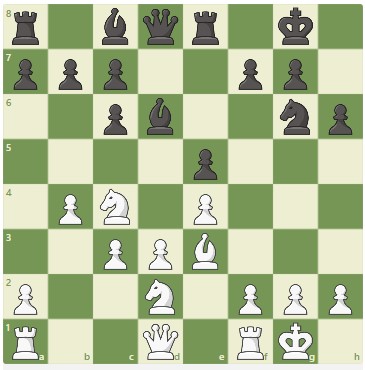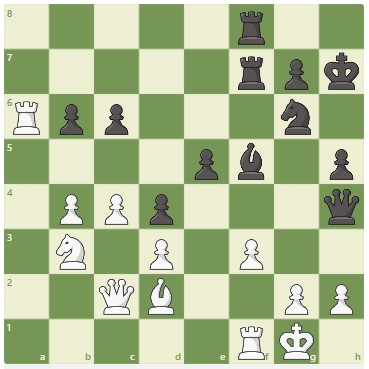He was close to a defeat this time but GM Magnus Carlsen turned his game with GM Sergey Karjakin around, won his fourth in a row, and became the new leader at Norway Chess with one round to go. GM Alireza Firouzja defeated GM Aryan Tari to enter the live top 10 for the first time, while GM Ian Nepomniachtchi beat GM Richard Rapport in the armageddon. USA pips India to enter chess Olympiad finals.

A candid and honest world champion provided a wonderful interview after what was his fourth straight win in Stavanger. Helped by the excellent questions from GM Judit Polgar and GM David Howell, he gave great insight into what it’s like for the world’s best player to completely misjudge a type of middlegame, being forced to grovel but finding the moves to hang on while surviving time-trouble, and eventually turn the game around.
“All of the last four games have been really, really tough but this was obviously different in the sense that I was just completely busted positionally speaking,” Carlsen admitted in a string of sincere revelations. “The other days it’s been tough trying to convert an advantage but this time I was just outplayed, to be honest. I think it’s a testament to his poor form that I won this game.”

Wasn’t it also a bit of his own resilience? Carlsen, with a smile: “A little bit. Still, it was… I don’t know… Good result!”
The problems kind of started with the choice of opening: Carlsen found himself in a position that he would have enjoyed playing as Black.
“I don’t know why I decided to play this line at all because usually, I’m looking at the black side and I am thinking: I have the bishop pair, and if they take on d6 you have nothing. Why even play this line.”

Taking that bishop on d6 fixes Black’s pawn structure so Carlsen wasn’t feeling great about that move, but he said he felt even worse about the alternatives.
Meanwhile, Karjakin played good moves, such as 15…b6. “A very nice move positionally speaking,” said Carlsen. “I was hoping he wouldn’t play it, to be honest.”
The Norwegian star explained that he based his evaluation on some similar positions in the Giuoco Pianissimo, but he soon realized that Black is just comfortable. On top of that, he miscalculated when taking on f5, and spent too much time on it.
However, having a clear advantage, Karjakin made some surprising moves such as 27…Qh4 (27…Qf6) and 29…Raf8 (29…Rfa7) and then Carlsen decided to enter some concrete complications as he went 30.Ra6.

Polgar called the move brave but Carlsen saw it differently: “I had a bad position. There’s not much to be brave about!” He also wanted to provoke 30…e4 (played) as he had seen that 33.Rf2 wasn’t losing (still calling it “shit-scary”).
According to Carlsen, Karjakin’s mistake was that he played his 34th and 35th move too quickly. Getting 35.d4 and 36.Ra3 in was a relief as White was sort of consolidating.
Karjakin missed another chance on move 40 and then the danger was definitely over as the queens could be traded. “I couldn’t get the queens off any quicker,” said Carlsen, who thought Karjakin “resisted poorly” in the endgame, especially on move 42.
Carlsen quoted sixth world champion Mikhail Botvinnik who said that “a protected bishop is as strong as a rook” in such endgames, and therefore it was a “massive conceptual mistake” (Carlsen) not to go for 42…Nf4 43.Bxf4 Rxf4.




